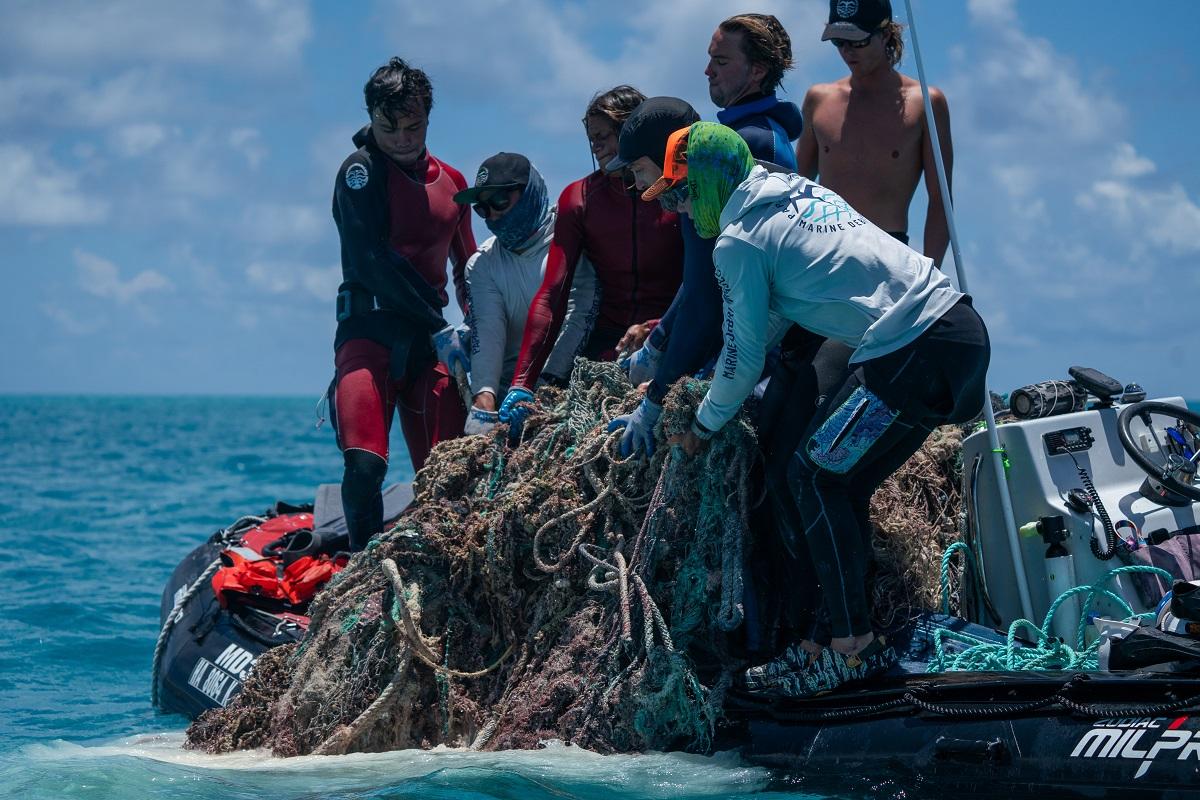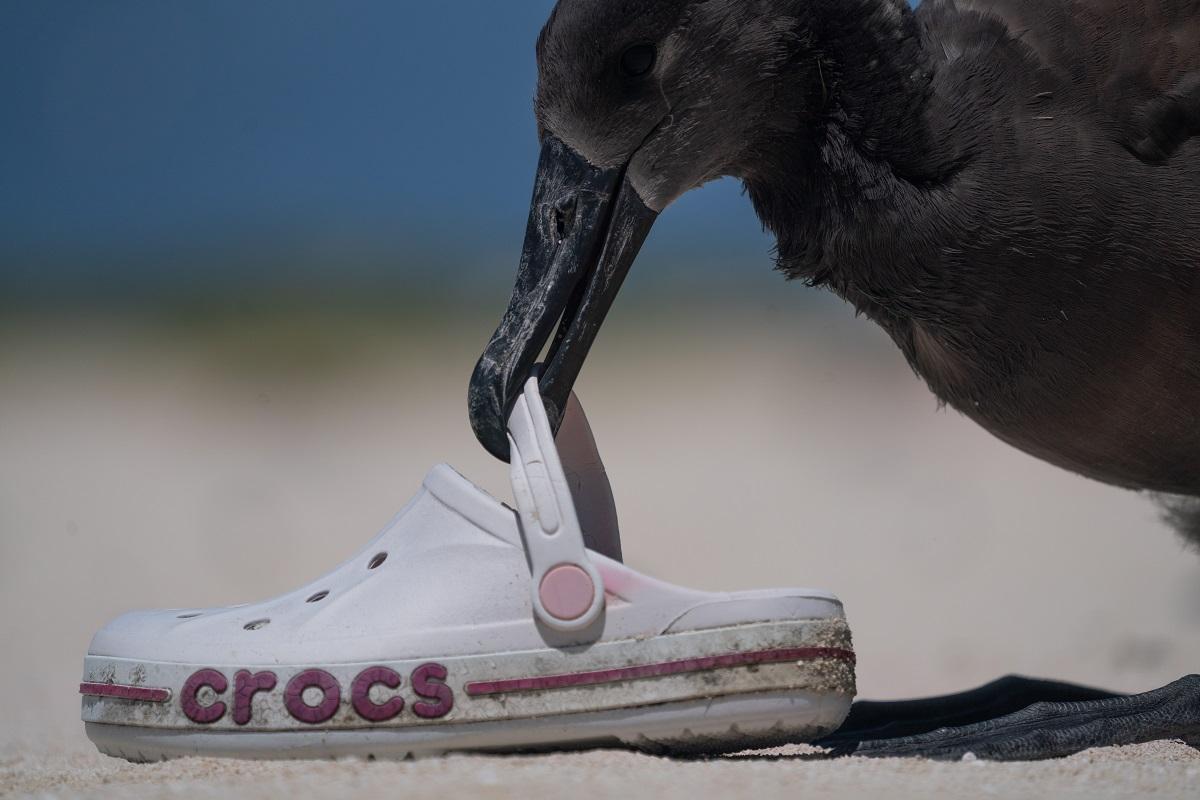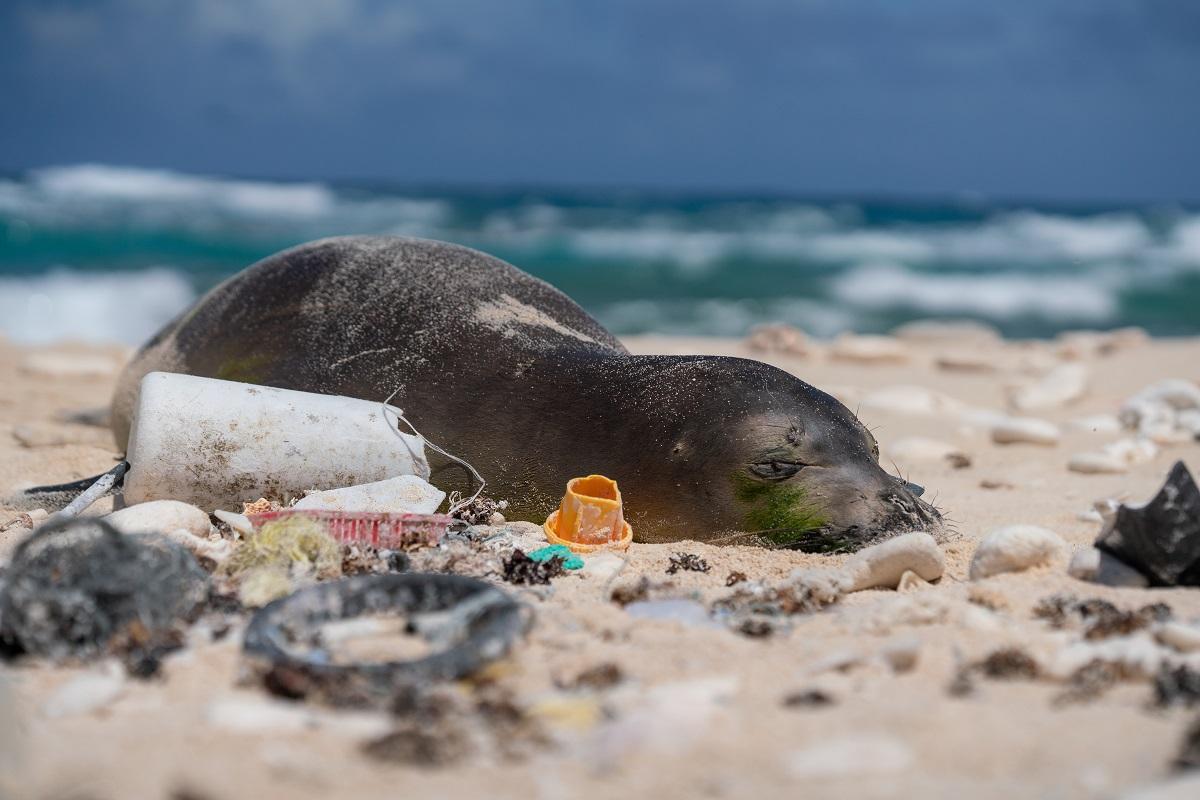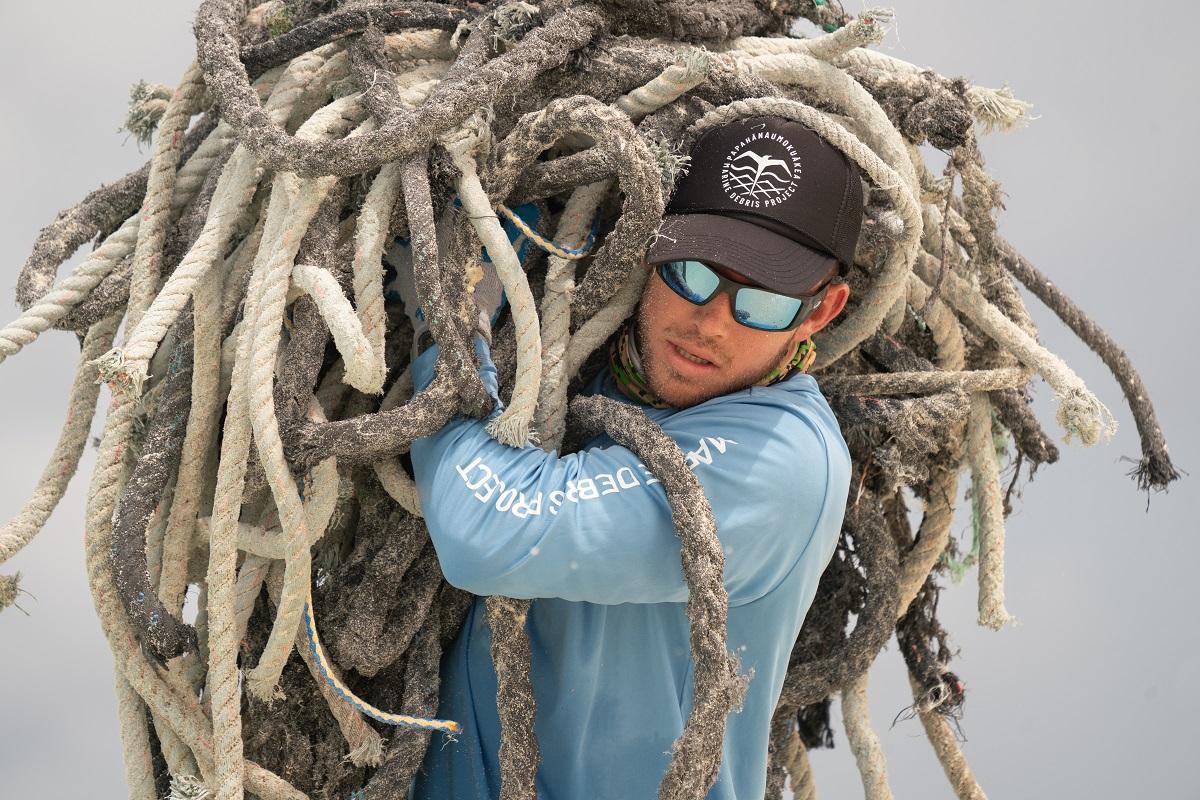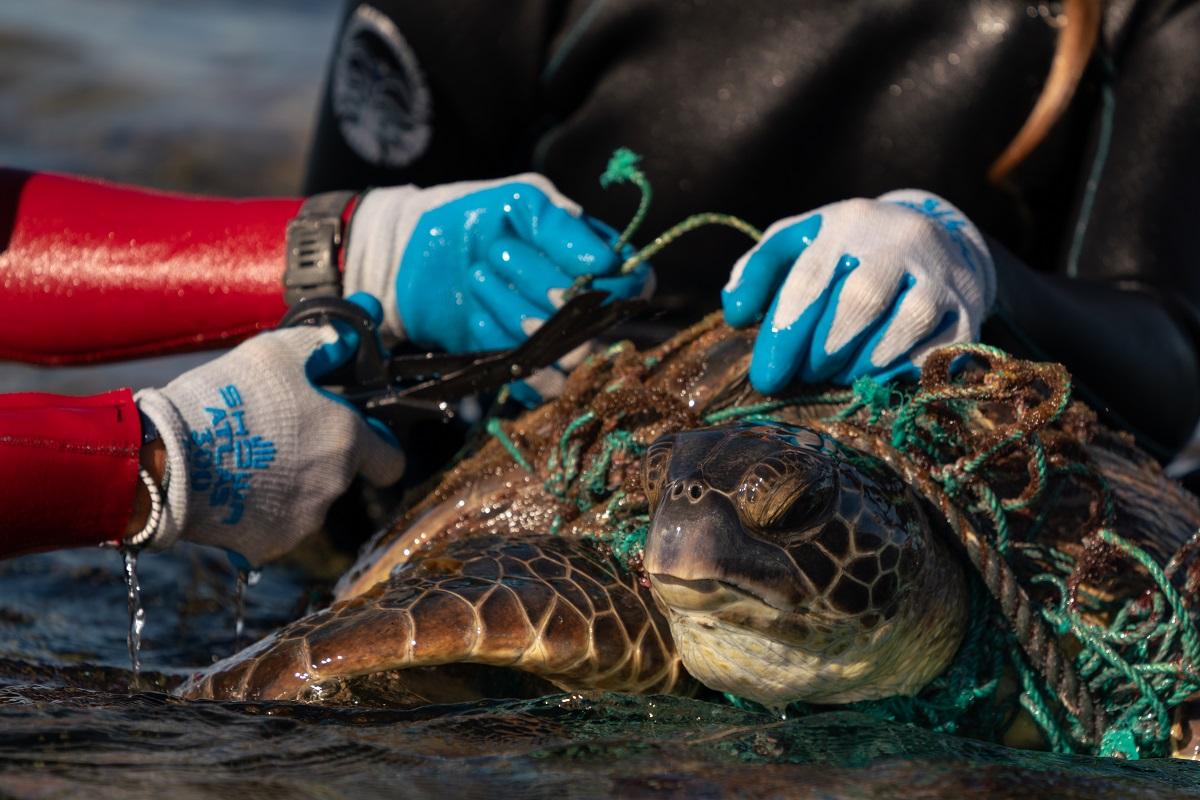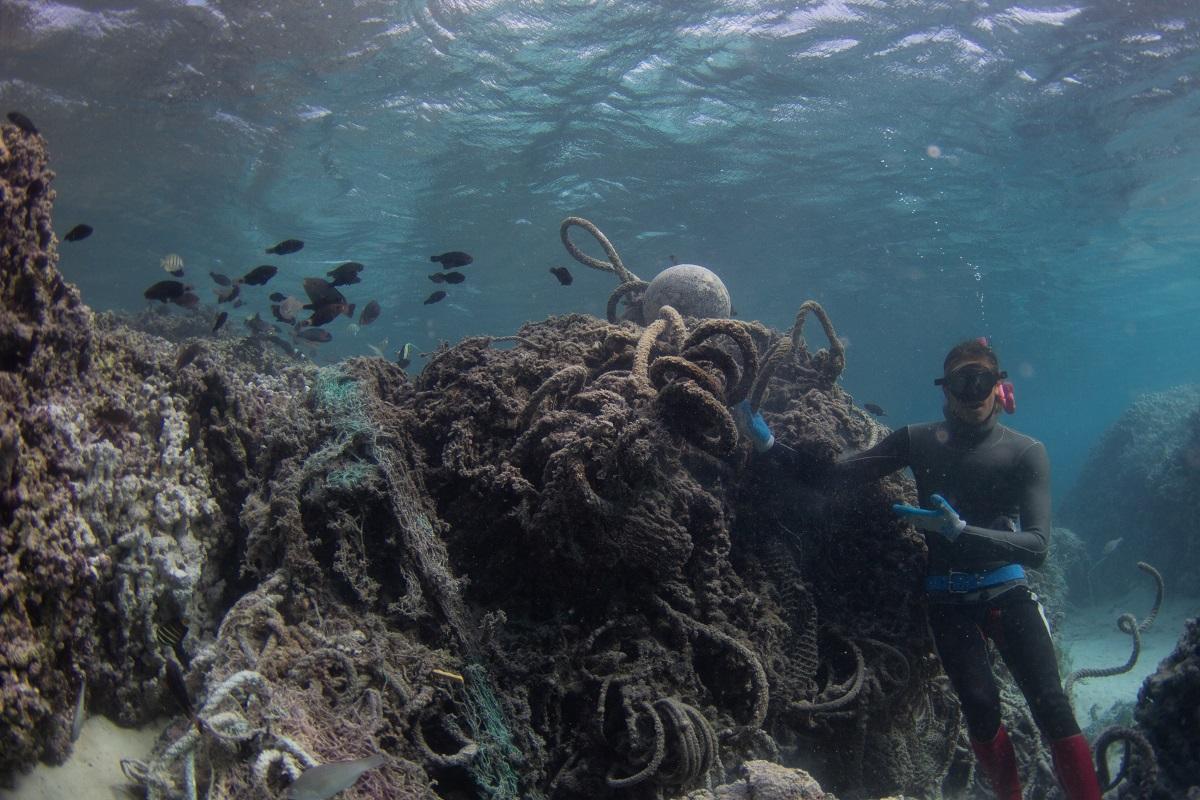
A milestone for marine debris removal at Papahānaumokuākea
Cleanup efforts from a NFWF grantee show promising results for endangered Hawaiian monk seals and delicate ecosystems
Nestled in the heart of the Pacific Ocean at the remote end of the Hawaiian Island chain, lies the Papahānaumokuākea Marine National Monument. This vast protected area, larger than all U.S. national parks combined, is home to 70 percent of U.S. shallow-water coral reefs and over 7,000 marine species, 23 of which are endangered.
The monument’s many reefs, atolls and islands are some of the most isolated places on Earth. Yet despite its remote location, ocean currents funnel more than 57 tons of derelict fishing gear and plastic trash onto the reefs and atolls of Papahānaumokuākea each year, endangering its delicate ecosystem.
The impact can be devastating. Fishing nets and other discarded “ghost gear” can entangle sea turtles and marine mammals, leading them to starve or drown. Seabirds and other species may ingest plastic particles or feed them to their young. And as coral reefs all over the world suffer from climate impacts and disease, marine debris can cause further damage and breakage, making corals more susceptible to disease and even leading to colony death.
Marine debris affects Hawaiian monk seals in particular – with only 1,600 remaining, they rank among the world’s most endangered marine mammals. Researchers estimate that plastic derelict fishing gear accounts for 76 percent of the observed entanglements affecting monk seals over the past 40 years.
Enter NFWF grantee Papahānaumokuākea Marine Debris Project (PMDP). This dedicated team of technicians and freedivers embarks on marine debris removal expeditions, traveling island to island, clearing tons of debris from shores and reefs.
To date, NFWF, the National Oceanic and Atmospheric Administration’s Marine Debris Program and Marc and Lynne Benioff have awarded $7.2 million in grants to PMDP to support these expeditions. This clean-up work is laborious, physical and not very glamourous, but this year PMDP has reached an astounding milestone: 1 million pounds of marine debris removed from the islands and atolls of Papahānaumokuākea since their inception.
But has this work made a difference for wildlife species such as the Hawaiian monk seal? A recent study in Science says yes. Scientists analyzed 40 years of data on Hawaiian monk seal entanglement and discovered that large-scale debris removal efforts have reduced seal entanglement rates.
This is great news for the corals, fish and sea turtles that also share the monk seal’s habitat. With continued conservation efforts, the scourge of plastic marine debris will hopefully lessen for all species that make their home in Papahānaumokuākea.
